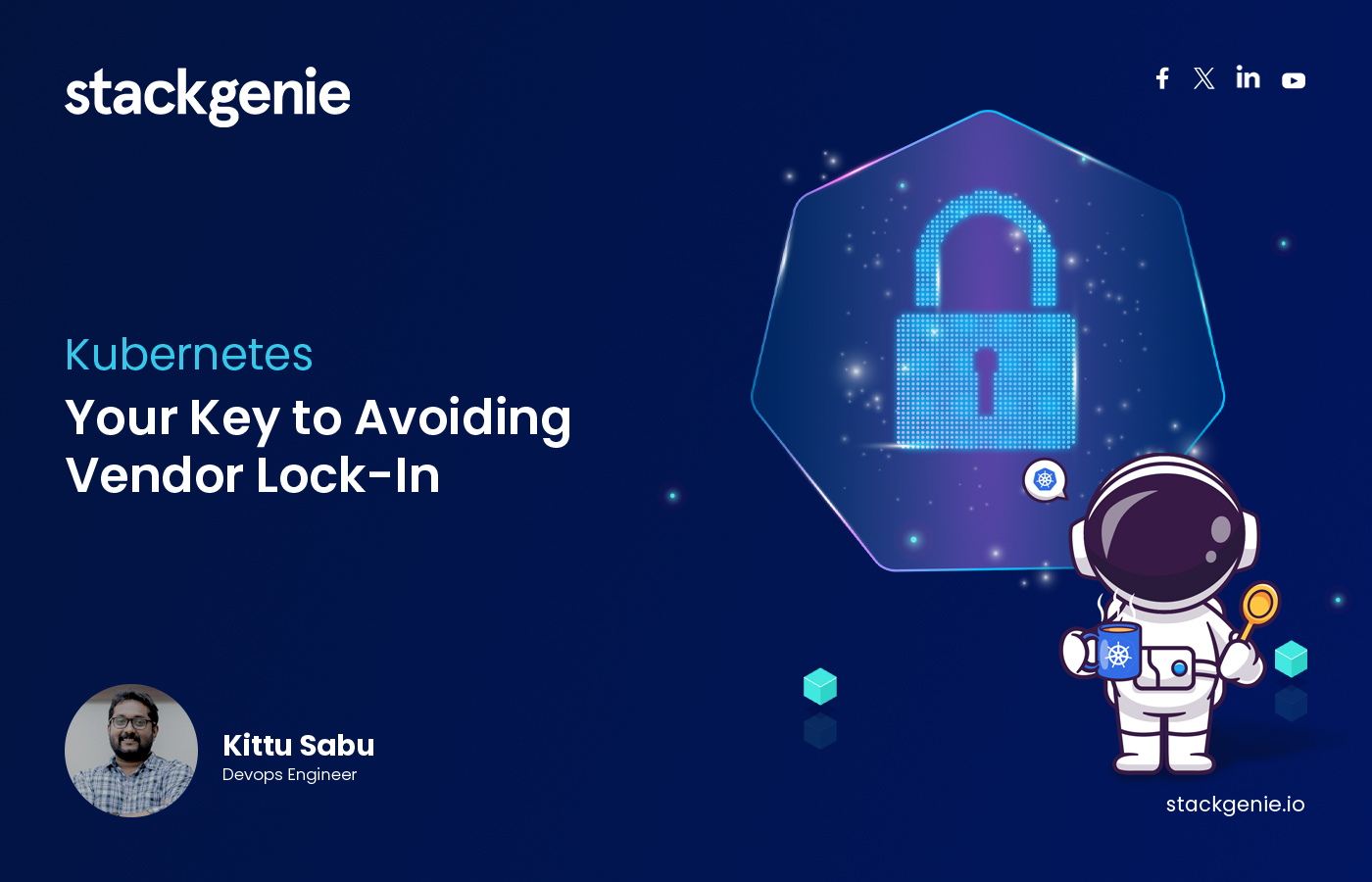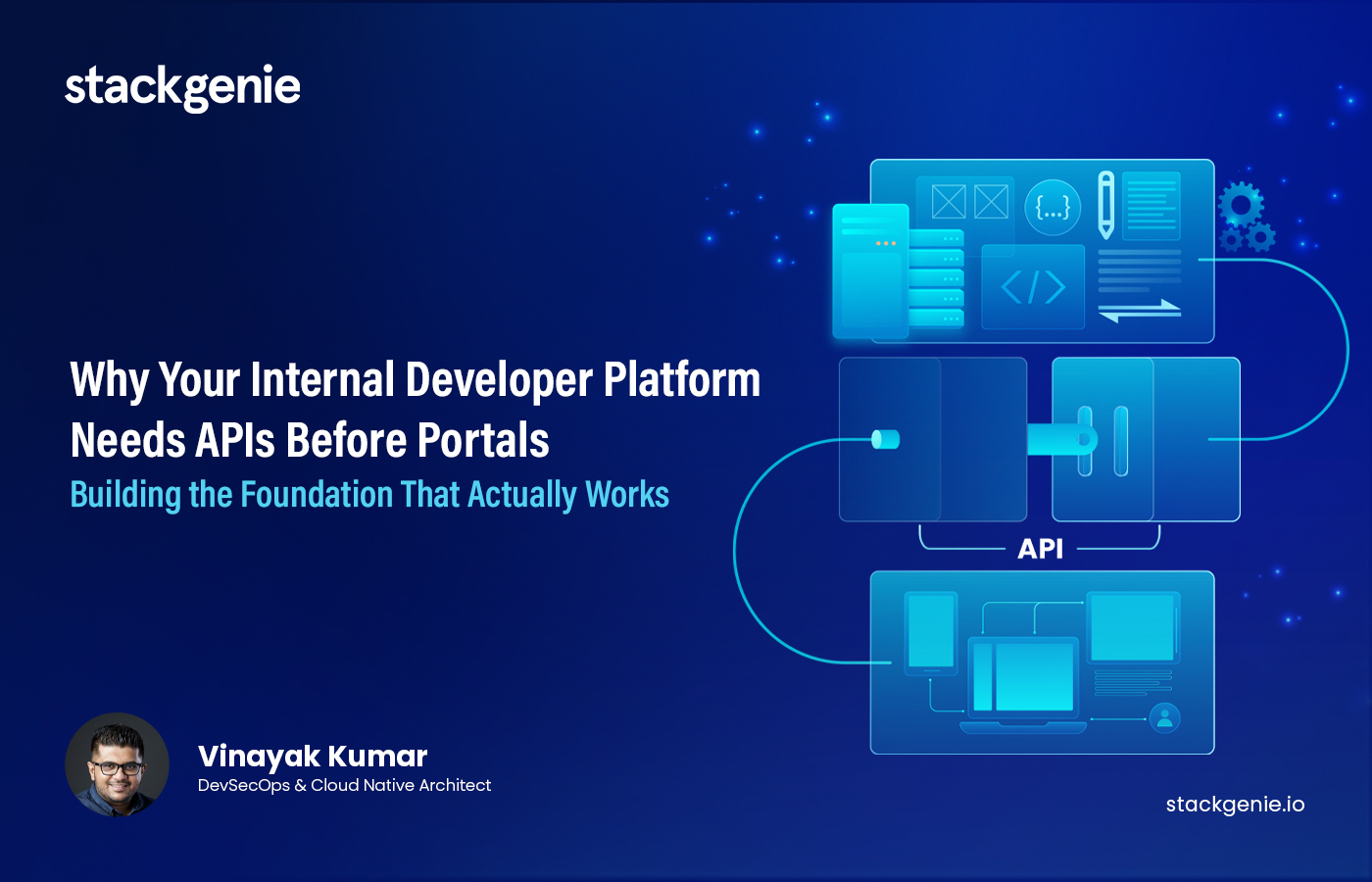Inside this article :
In a world where cloud computing is the cornerstone of digital transformation, businesses are increasingly placing their faith (and data) in the hands of cloud service providers. But there’s a catch—vendor lock-in. What begins as a simple cloud setup often turns into a trap where companies find it painfully difficult to migrate away from their chosen provider.
Kubernetes is changing the game. This article explores how it helps avoid vendor lock-in, increase operational freedom, and future-proof your infrastructure.
What Is Vendor Lock-In—and Why Should You Care?
Vendor lock-in refers to being dependent on a single provider’s ecosystem—tools, APIs, configurations—that makes migrating away costly, time-consuming, or even unfeasible.
Key drawbacks of vendor lock-in:
-
High switching costs
-
Limited flexibility
-
Proprietary technologies
-
Contractual constraints
-
Slowed innovation
You’re essentially building your business on someone else’s land—risky for long-term scalability or autonomy.
Why Kubernetes Is a Lock-In Breaker
Kubernetes allows your applications to run anywhere with minimal changes. It is an open-source platform that automates deployment, scaling, and management of containerized applications.
With Kubernetes, you gain:
-
Consistency – Uniform environments across cloud providers
-
Portability – Write once, deploy anywhere
-
Interoperability – Avoid vendor-specific SDKs
-
Scalability – Seamless multi-region and multi-provider expansion
The Myth of IaC (Infrastructure as Code) Independence
“We use Terraform. Isn’t that enough?” Not quite.
While tools like Terraform, Pulumi, and CloudFormation automate deployments, they’re still often tied to provider-specific APIs or configurations:
-
CloudFormation is AWS-specific
-
Terraform modules include provider-based constraints
-
APIs are still tied to a particular platform
Kubernetes introduces an abstraction layer that separates application logic from the underlying infrastructure.
Key Features of Kubernetes That Support Portability
1. Uniform Deployment Model
Create YAML files for deployments, services, and configurations—reusable across cloud platforms.
2. Platform-Agnostic Workloads
Containerized apps don’t rely on specific cloud environments. Just a container runtime and Kubernetes API.
3. Cross-Platform Orchestration
Schedule containers across multi-cloud or hybrid environments using a centralized control plane.
4. Cloud-Native Ecosystem Compatibility
Tools like Helm, Prometheus, and Istio integrate seamlessly across Kubernetes environments—regardless of where they’re hosted.

Real-World Scenario: Migrating with Kubernetes
Scenario: You’re running fully on AWS using services like RDS, S3, and Lambda. You now want to adopt Google Cloud or move hybrid.
Without Kubernetes:
-
Rewriting applications for new APIs
-
Painful data migrations
-
Complex compliance processes
With Kubernetes:
-
Same containerized workloads
-
Centralized orchestration
-
Minimal downtime during migration
Example: Companies like Spotify, Shopify, and CERN use Kubernetes to remain cloud-agnostic and agile.
How to Make Kubernetes Work for You
1. Adopt a Cloud-Agnostic Architecture
Use open standards (REST APIs, open-source tools) instead of provider-specific services.
2. Avoid Proprietary Services
Select services that use open protocols (e.g., PostgreSQL, Kafka) to avoid rewrites later.
3. Use Portable Storage Solutions
Implement CSI-compatible storage that works across multiple cloud providers.
4. CI/CD Pipelines with Portability in Mind
Use GitLab CI, Jenkins, or ArgoCD—tools designed for Kubernetes-native, multi-cloud workflows.
5. Monitor and Log with Open-Source Tools
Prometheus, Grafana, Fluentd, and Loki provide cloud-neutral observability.
Why Open-Source Matters
Kubernetes’ open-source foundation is key to its flexibility and longevity:
-
Global community and continuous updates
-
Open APIs and plugin support
-
No paywalls or hidden costs
Unlike proprietary cloud tools, Kubernetes evolves transparently with community-driven innovation.
Final Thoughts: Kubernetes Is Freedom
In today’s cloud landscape, flexibility is strategic. Kubernetes gives you that flexibility—allowing you to orchestrate across providers, escape platform lock-in, and innovate freely.
Kubernetes is not just infrastructure automation—it’s a business enabler. It allows companies to respond quickly to market changes, reduce dependency, and stay future-ready.
FAQs
1. Can Kubernetes completely eliminate vendor lock-in?
Not entirely. It significantly reduces lock-in at the app and infra level, but services like managed databases may still create partial lock-in.
2. Is Kubernetes hard to learn and manage?
Yes, it has a learning curve. But managed services like EKS, GKE, and AKS simplify operations, especially with expert consulting support.
3. What industries benefit most from Kubernetes?
SaaS, finance, healthcare, e-commerce—any sector requiring uptime, agility, and scalability benefits from Kubernetes.
4. How does Kubernetes help with disaster recovery?
By distributing workloads across regions or clusters, Kubernetes enhances availability and simplifies recovery processes.
5. Can Kubernetes be used on-premises?
Absolutely. With platforms like OpenShift and Rancher, you can use Kubernetes to orchestrate both on-prem and cloud workloads.


